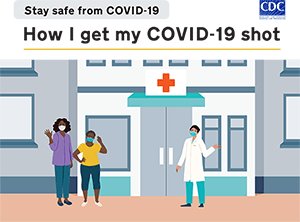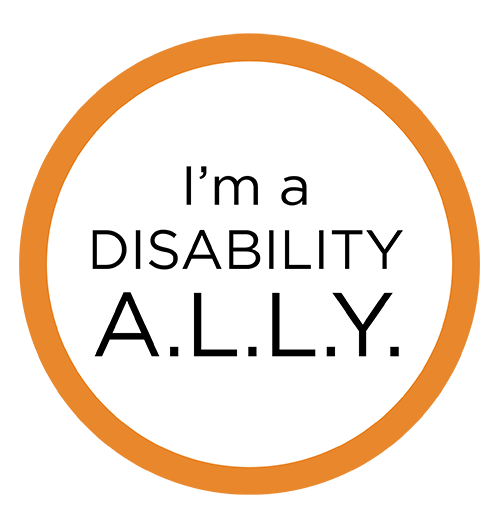Health Equity for People with Disabilities

What is Health Equity?
Health equity is achieved when everyone has the opportunity to be as healthy as possible. Health inequities are reflected in differences in length of life; quality of life; rates of disease, disability, and death; severity of disease; and access to treatment.
The Division of Human Development and Disability (DHDD) works to promote health and reduce health inequities for people with disabilities of all ages, so they can participate fully in all aspects of their communities throughout their lives and have the opportunity to achieve all they set out to do.
Why is Health Equity Important for People with Disabilities?
As of 2016, an estimated one in four, or 61 million adults in the United States reported a disability. People with disabilities (such mobility limitations, deafness and blindness, or intellectual disabilities) face many challenges to achieving optimal health and accessing high-quality health care.[1] Data from 2019 shows, compared to people without disabilities, people with disabilities have less access to health care, have more depression and anxiety, engage more often in risky health behaviors such as smoking, and are less physically active.2
How DHDD is Supporting Health Equity
- Monitoring and researching public health data and reducing health disparities
- DHDD collects data and promotes early diagnosis, intervention, and linkage to services so that children with disabilities can have better health and developmental outcomes. This includes our Early Hearing Detection and Intervention, or EHDI, programs across the United States, including Puerto Rico. EHDI programs actively track and ensure each child at risk for permanent hearing loss or who is diagnosed as deaf or hard of hearing receives timely diagnosis and intervention services.
- DHDD’s Autism and Developmental Disabilities Monitoring (ADDM) Network is a group of programs to estimate the number of children with autism spectrum disorder (ASD) and other developmental disabilities living in different areas of the United States. The data from the ADDM Network can be used by communities to inform and encourage timely diagnosis of ASDs and developmental disabilities, and the seeking of early intervention services sooner. ADDM has also tracked the prevalence of ASD since 2000, and racial/ethnic disparities in the prevalence of ASD have been observed each year. ADDM continues to look at risk factors or other disparities in how children with ASD are tested and treated in real-world settings.
- DHDD’s Learn the Signs. Act Early. (LTSAE) program addresses health equity by working to eliminate disparities (e.g., economic disparities) in early identification of developmental disabilities so all children and their families can access needed services as soon as possible. LTSAE’s efforts to engage parents and providers in developmental monitoring and other activities to promote early identification of developmental delays and/or disabilities focus primarily on families with lower incomes and lower levels of education. LTSAE partners with programs like Women, Infants, and Children (WIC), Early Head Start, Home Visiting, and subsidized early childcare programs to reach these populations.
- DHDD works with partners across CDC, including the National Center on Health Statistics, to help ensure that our national datasets include the six standardized disability questions that appear consistently in Behavioral Risk Factor Surveillance System (BRFSS) surveys to understand disparities within the disability population.
- DHDD’s Disability and Health Data System, or DHDS, contains the latest BRFSS data on U.S. adults with disabilities, including cognitive, mobility, vision, self-care, independent living, and—for the first time in 2016—deafness or serious difficulty hearing. DHDS provides state-level disability data on approximately 30 health indicators, such as smoking, heart disease, and receiving the flu vaccine. Equipped with these data, state epidemiologists, researchers, policymakers and public health professionals can plan for inclusive communities that offer programs and services needed to improve the health of adults with disabilities.
- Promoting healthy living
- DHDD supports two national centers on health promotion for people with disabilities, Special Olympics and the National Center on Physical Activity and Disability, and 10 State Disability and Health Programs to strengthen partnerships and design, create, and implement programs to help improve the health of people with disabilities in their states and communities.
- Supporting inclusive health programs
- DHDD is working with RTI International, the CDC Foundation, and Georgia Tech’s Center for Inclusive Design and Innovation to help develop relevant, accessible, and actionable resources for people with disabilities, caregivers, healthcare providers , and disability-serving partner organizations. Through this work, DHDD is also developing, and disseminating COVID-19 emergency response materials in alternate formats including American Sign Language, braille, and easy-to-read documents to meet the unique communication needs of people with disabilities.
- DHDD collaborates with Tourette Association of America (TAA) and Attention Deficit/Hyperactivity Disorder partners, such as Children and Adults with Attention-Deficit/Hyperactivity Disorder or CHADD, to improve the connection to diagnosis and treatment in underserved areas and among racial and ethnic minorities. For example, DHDD supports TAA to engage the Hispanic community by using Spanish-speaking operators to staff the telephone hotline, develop website resources–such as easy-to-search lists of providers and specialists (by locality), including providers that offer telemedicine–and educate and support the community by hosting online support groups aimed at underserved geographic locations and racial and ethnic minority populations.
To learn more about Health Equity, please visit
Health Equity – Office of Minority Health and Health Equity – CDC
Health Equity – National Center for Chronic Disease Prevention and Health Promotion
References
- Okoro CA, Hollis ND, Cyrus AC, Griffin-Blake S. Prevalence of Disabilities and Health Care Access by Disability Status and Type Among Adults — United States, 2016. MMWR Morb Mortal Wkly Rep 2018;67:882–887. DOI: http://dx.doi.org/10.15585/mmwr.mm6732a3
- Centers for Disease Control and Prevention, National Center on Birth Defects and Developmental Disabilities, Division of Human Development and Disability. Disability and Health Data System (DHDS) Data [online]. [Accessed August 6, 2019].

